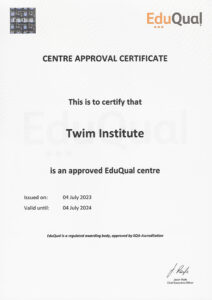
There are several agile scrum challenges in the world of business. Agile is a project management approach that emphasizes flexibility and rapid adaptation to change. It is based on the Agile Manifesto, a set of principles for software development that prioritize individuals and interactions, working solutions, and customer collaboration over processes and tools.
Agile is an iterative approach to project management and software development that helps teams deliver value to their customers faster and with fewer headaches.
Agile Scrum is a framework for developing and delivering products through collaborative effort. It is a widely used approach in software development, but can also be applied to other fields.
The Agile Scrum framework is based on the principles of transparency, inspection, and adaptation. It encourages a flexible, iterative approach to product development, where teams work in short cycles (called “sprints”) to deliver incremental improvements.
In Agile Scrum, a “scrum team” is responsible for delivering a product. The team is typically made up of a Scrum Master, who helps facilitate the process and remove any obstacles, and a group of developers who are responsible for the actual development work. The team works together to plan, develop, and deliver the product in a series of sprints.
The Agile Scrum process includes several key events:
- Sprint Planning: The team meets to plan the work for the upcoming sprint.
- Daily Scrum: The team meets daily for a short (15-minute) stand-up meeting to discuss progress and any issues that have arisen.
- Sprint Review: The team demonstrates the work that has been completed during the sprint to stakeholders.
- Sprint Retrospective: The team reflects on the sprint and identifies ways to improve the process in the future.
Overall, the goal of Agile Scrum is to deliver a high-quality product in a collaborative and efficient manner.
Top Agile Implementation Challenges
There are many challenges that organizations may face when implementing an Agile approach to project management and development. Some common challenges include:
- Resistance to change: Agile requires a significant shift in the way that work is organized and carried out, and some team members may resist this change.
- Lack of experience: Many organizations and individuals may not have experience with Agile methodologies, which can make it difficult to implement effectively.
- Difficulty in estimation: Agile approaches rely on the ability to quickly estimate the size and scope of work, which can be difficult for some teams.
- Complex or changing requirements: Agile approaches are well-suited to handling changing requirements, but it can be difficult to adapt to rapidly changing or complex requirements.
- Poor communication: Agile relies on strong communication and collaboration among team members, and poor communication can hinder the effectiveness of an Agile team.
- Insufficient support from management: Agile requires a significant investment in terms of time and resources, and management may not fully support the transition to an Agile approach.
- Limited visibility into progress: Agile approaches can make it difficult to track progress and identify potential issues, which can lead to difficulties in managing projects.
- Difficulty in measuring success: Agile approaches may not align with traditional measures of success, which can make it difficult to evaluate the effectiveness of an Agile project.
Reasons For Agile Scrum Challenges
There are several common challenges that organizations may face when implementing agile Scrum methodologies. Some of these challenges include:
Lack of understanding or Buy-in
Agile Scrum requires a shift in organizational culture and mindset, and it can be difficult to get everyone on board with the new way of working.
Difficulty in Estimating Work
One of the key principles of Scrum is the concept of “sprints,” during which a specific amount of work is completed. It can be challenging to accurately estimate how much work can be completed during a sprint, which can lead to unrealistic goals and expectations.
Difficulties with Cross-Functional Team
Agile Scrum relies on cross-functional teams that include all the skills and expertise needed to complete a project. It can be challenging to bring together team members from different departments and get them to work effectively together.
Complex or Changing Environments
Agile Scrum is best suited for projects with well-defined goals and a clear understanding of the work involved. In complex or rapidly changing environments, it can be difficult to apply Scrum principles effectively.
Lack of Skilled Scrum Masters
A Scrum Master is a key role in the Scrum process, responsible for facilitating the team’s work and helping to remove any obstacles that may arise. It can be challenging to find individuals with the necessary skills and experience to serve as effective Scrum Masters.

Overcoming the Challenges
There are a number of strategies that organizations can use to overcome the challenges of implementing an Agile approach. Some strategies include:
- Training and education: Providing training and education on Agile principles and methodologies can help team members understand the benefits and learn how to effectively implement Agile practices.
- Clear communication and transparent decision-making: Effective communication and transparent decision-making can help build trust and foster collaboration among team members.
- Adequate resources and support: Ensuring that the team has adequate resources and support from management can help smooth the transition to an Agile approach.
- Incremental implementation: Rather than trying to implement Agile practices all at once, organizations can adopt an incremental approach and gradually introduce new practices as they become comfortable with them.
- Flexibility: Agile approaches require a high degree of flexibility and the ability to adapt to changing circumstances. Organizations should be prepared to adapt and adjust their approach as needed.
- Continuous improvement: Agile approaches rely on continuous improvement, and organizations should encourage team members to continually reflect on their processes and identify ways to improve.
- Strong leadership: Strong leadership is critical to the success of an Agile team. Leaders should provide clear direction and support, and create a culture of trust and collaboration.
Conclusion
In conclusion, implementing agile practices can be challenging for many. To address these challenges, it is important to establish clear communication channels, set clear goals and priorities, and continuously monitor progress.
By following these recommendations, teams can overcome these challenges and achieve greater success in their agile endeavors.
Personally, I’d encourage you to implement these strategies and continue learning about agile practices to ensure that your team is able to thrive in an agile environment.




